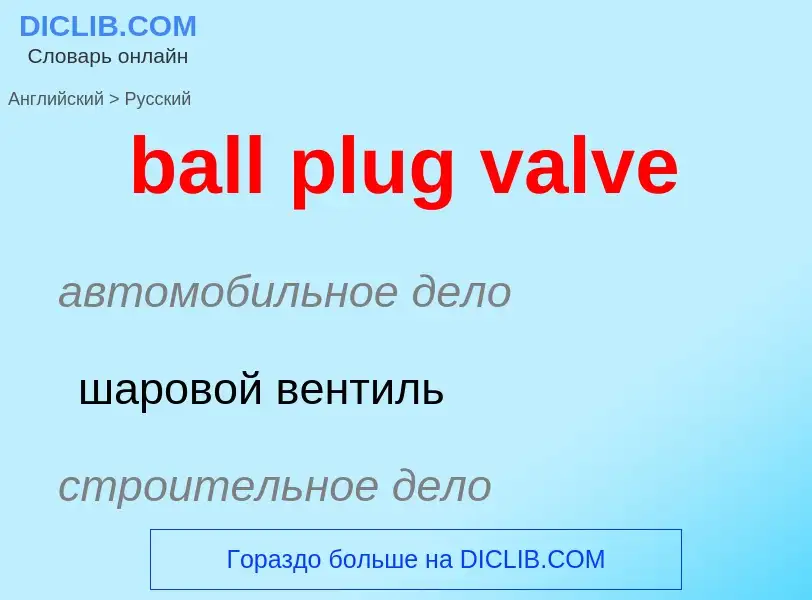Перевод и анализ слов искусственным интеллектом ChatGPT
На этой странице Вы можете получить подробный анализ слова или словосочетания, произведенный с помощью лучшей на сегодняшний день технологии искусственного интеллекта:
- как употребляется слово
- частота употребления
- используется оно чаще в устной или письменной речи
- варианты перевода слова
- примеры употребления (несколько фраз с переводом)
- этимология
ball plug valve - перевод на русский
автомобильное дело
шаровой вентиль
строительное дело
шаровой кран
общая лексика
выпускной кран
запорный кран
строительное дело
пробковый (стержневой) кран
газовый кран
общая лексика
конусный затвор
строительное дело
пробковый (конусный) кран
нефтегазовая промышленность
крановый клапан
конический вентиль
пробковый кран
автомобильное дело
шаровой клапан
строительное дело
шаровой вентиль (клапан)
шаровой затвор
шариковый обратный клапан
поплавковый клапан (затвор) (с шаровым поплавком)
шаровой кран
нефтегазовая промышленность
шаровая задвижка (трубопровода)
Определение
Википедия
A ball valve is a flow control device which uses a hollow, perforated and pivoting ball to control fluid flowing through it. It is open when the ball's hole is in line with the flow inlet and closed when it is pivoted 90-degrees by the valve handle, blocking the flow. The handle lies flat in alignment with the flow when open, and is perpendicular to it when closed, making for easy visual confirmation of the valve's status. The shut position 1/4 turn could be in either clockwise or counter-clockwise direction.
Ball valves are durable, performing well after many cycles, and reliable, closing securely even after long periods of disuse. These qualities make them an excellent choice for shutoff and control applications, where they are often preferred to gates and globe valves, but they lack the fine control of those alternatives, in throttling applications.
The ball valve's ease of operation, repair, and versatility lend it to extensive industrial use, supporting pressures up to 1,000 bar (100 MPa; 15,000 psi) and temperatures up to 752 °F (400 °C), depending on design and materials used. Sizes typically range from 0.2 to 48 inches (5.1 to 1,219.2 mm). Valve bodies are made of metal, plastic, or metal with a ceramic; floating balls are often chrome plated for durability. One disadvantage of a ball valve is that when used for controlling water flow, they trap water in the center cavity while in the closed position. In the event of ambient temperatures falling below freezing point, the sides can crack due to the expansion associated with ice formation. Some means of insulation or heat tape in this situation will usually prevent damage. Another option for cold climates is the "freeze tolerant ball valve". This style of ball valve incorporates a freeze plug in the side so in the event of a freeze-up, the freeze plug ruptures, acting as a 'sacrificial' fail point, allowing an easier repair. Instead of replacing the whole valve, all that is required is the fitting of a new freeze plug.
In the case that a ball valve is used for cryogenics or product that may expand inside of the ball, there is a vent drilled into the upstream side of the valve. This is referred to as a vented ball.
A ball valve should not be confused with a "ball-check valve", a type of check valve that uses a solid ball to prevent undesired backflow.
Other types of quarter-turn valves include the butterfly valve and plug valve and freeze proof ball valve.





